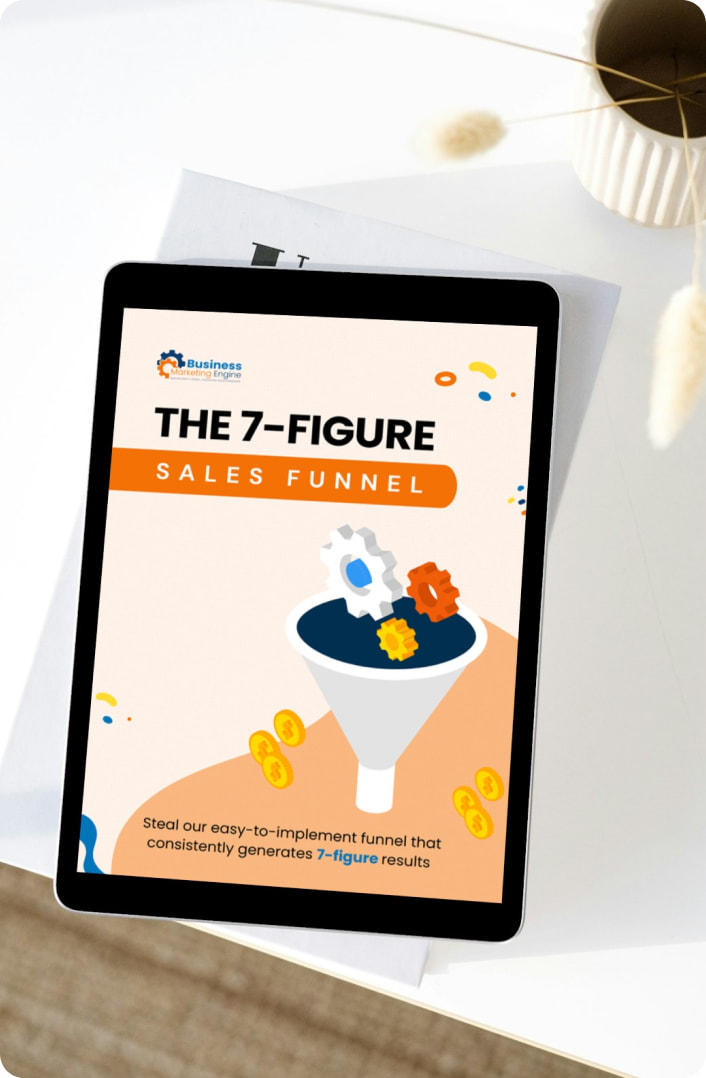A lot of people think marketing is one-sided. But we have some news for you: It’s not. Marketing isn’t just advertising or a few fun social media posts a week. It’s more than a simple way to drive revenue and increase profit margins.
“Okay,” you might be thinking. “So then it must be pretty tricky. I’ll probably be overwhelmed and stressed out. What if my marketing team can’t handle everything?”
Or:
“I already have so much on my plate. Now that I know marketing is more involved than I thought, won’t it be too tough to maintain?”
Well, the simple answer is no. Because we’re here to help you figure out all the critical details when it comes to marketing.
You might run a startup and need more than just the traditional marketing gambit. You could be well-established in your industry and need some hot tips and reminders on how to market like a pro. Maybe you’re a marketing expert and want to zero in on how you can best serve your company.
No matter what your situation is, we know the sure-fire way to up your marketing game. Your answers come in the form of the 4 Ps of marketing and the marketing mix.
What is a Marketing Mix?
A marketing mix is pretty much just what it sounds like. At its most basic, it’s a mashup. Let’s break that down.
It’s when you use a marketing tool. That tool mixes together several elements with the goal to promote your business’s products or services. It strengthens your brand throughout the process.
Those elements in the marketing mix can be any number of things. But at the end of the day, they’re based on your analysis of the 4 Ps of marketing. Those include:
- Product
- Price
- Place
- Promotion
But we dive into that much deeper later on.
The marketing mix is a key marketing strategy. It’s especially useful for the promotion of a product-based business. If that sounds like your organization, you’ve come to the right place.
Use this mix for product positioning. It will address the following questions:
- Where is the right place to sell my product?
- What’s an appropriate price relative to my product’s perceived value?
- When should I sell my product?
Today, we go over the four Ps of marketing. More “Ps” have popped up over time in the modern market. But the four that we detail below are the best ones to reference when you carry out your marketing campaign.
What is the Importance of Marketing Mix?
If you’ve been in or around the business world for a while, you know that you need marketing to stand out. You understand that business success is more than sales or the right staffing.
If you’ve never implemented a marketing mix, you may wonder why it’s so important. The cold, hard facts tell us that you can’t funnel all of your money into one marketing strategy. If you do that, you essentially end up wasting money. You won’t see the ROI that you want and need.
That can be tough because sometimes you see one marketing tactic that you’re almost positive will work. You think it’ll cost less upfront than if you spread your budget across various strategies. Think again.
A marketing mix strategy gives you a much higher chance to attract more customers within your target audience. It uses the 4 Ps of marketing to achieve those results.
What are the 4 Ps of Marketing?
Alright. We’ve talked a big game about the 4 Ps of marketing and just how vital they are to your business to live a long and healthy life.
So what are they, really? Why should you or your marketing managers care about them? As far as product marketing, are they all that we chalk them up to be?
The simple answer is yes. The 4 Ps of marketing are the top components you need to market a product or service. Each one builds off of the next.
So let’s untangle them, piece by piece before we get into how you can actualize them.
Price
If you’re reading this, you more likely than not already know what a product or service’s price is. We’ll clarify anyways. A price is the monetary amount that your customer pays to purchase your product or use your service.
But if you’re an established business person, you also know it’s not as simple as it first seems. Your company’s prices act as your lifeboat. They determine whether you will profit and ultimately survive in the industry.
Your prices have to account for and meet the costs on your end. They also have to lead you to the appropriate profit margin.
When you decide on a price point, you have to consider several elements. Your prices need to measure up to those of similar available products. Also, analyze how much your customers and potential customers are willing to pay. Make sure that your product’s perceived value reflects its price.
Think about potential discounts or promotional sales. Consider your target audience’s geographic location: what will they pay in taxes on your product?
It all depends on your target audience and brand’s reputation. But here are some examples of where your final price might land:
- Luxury price
- Bargain price
- Somewhere in the middle of the two
 Product
Product
You have to create, market and build your product in the most concrete way possible. You have to flesh it out entirely before you market it.
According to Oxford Languages, a product is “an article or substance that is manufactured or refined for sale.”
You know that it’s much more than that. A product has to be something that your target market needs. You have to make sure that it satisfies whatever their needs may be.
With products, ensure that its content marketing turns its features into benefits. It’s not just about its features. It’s about how those features can improve your customer’s quality of life.
What is your product’s life cycle? How does it stand apart from your competition’s?
Here, you can use market research to see what your customers want and how they get what they want from your competitors. Identify that in your content marketing so that you become their go-to brand.
Place
Do you have a brick-and-mortar location for your customer base to purchase your products? Do you have an online site for them to browse and buy? Maybe you have both. Businesses without a website are few and far between in the modern market.
Regardless of whether your customers are mostly online or in-store shoppers, place matters.
Where is your target audience most likely to first interact with your products? Where do they first learn about what you offer?
Depending on what you sell, it can be simple to figure this out. If you sell fishing gear, your target market usually first encounters your brand at fishing shops or from their peers.
If you sell gourmet potato chips, however, this information might be harder to pinpoint. Fishers are a pretty narrow market. Most of them frequent the same outlet stores and you know that they hang out around bodies of water.
On the other hand, you can find people who like gourmet potato chips virtually anywhere. They could shop at a luxury grocery store or a franchised supermarket. They go to any number of restaurants and buy tickets to novelty food festivals. There are plenty of possible distribution channels here.
Understand the place that your target audience will connect with your product. Then, you can move on to promotion, the last of the 4 Ps of marketing.
 Promotion
Promotion
Promotion is when you introduce your product or service to the marketplace. It might be what you think of when you reflect on traditional marketing. It’s how you advertise your product and let it shine for your customer care.
It’s true that it’s an integral part of the 4 Ps of marketing. But all four work like building blocks off of one another. You can’t have one without the other. So don’t jump right to promotion when you’re ready to market your product or service.
Promotion is also one of the most expensive parts of the marketing mix. Why? Because it pays off. How you promote your product is how you catch your potential customer’s eye. It’s how you draw them in.
You can do so in many different ways. Some include:
- Social media posts
- Personal branding
- Sales promotion
- Email marketing
- And more
Let’s get into the “more” below.
Common Tactics of Marketing Mix
Remember that promoting your product or service is not the bottom line. Even though it’s crucial, it’s still only a part of the bottom line. You can’t make a great pasta sauce recipe with only one ingredient. You need tomato paste, cream, seasoning and garlic. The marketing mix is the same way.
Common tactics for your marketing mix keep the 4 Ps of marketing in mind the whole time. They also change over time. After all, the world of businesses and how they brand themselves fluctuates often.
With that being said, these tactics aren’t a static approach to marketing success. Look at them as a reference for takeoff.
Here are some common tactics that you can use for your marketing mix. Feel free to use just one or any number of them combined:
- A website for your product
- Search engine marketing (with effective search engine optimization tactics, like keywords
- A single landing page
- Social media marketing (through any or multiple platforms, like Instagram, Pinterest, LinkedIn, Facebook or Twitter)
- Paid search ads or paid social media ads (think of PPC)
- Product reviews (which you can find on your own site’s product pages or from a site you sell through, like Amazon.com)
- Print advertising in magazines, newspapers, journals or other print media sources
- Sales and marketing brochures (identify where you will hand these out or display them, depending on your brand)
- Specific packaging that attracts your target audience
- Online video content (you can use platforms such as Vimeo or YouTube here)
- Trade show events (think small-scale festivals, large-scale expos or festivals in the right location for your target audience)
- Ads on local or national radio stations (ensure the radio stations uphold your brand values and appeal to your ideal buyer)
- In-store demonstrations (also consider recording these and posting them online to reach as much of your market as possible)
- Sponsorships
- Billboard advertisements (if they’re in the right place, of course)
Example of Marketing Mix with 4 Ps Element
If you’re new to this, it’s hard to see how much it can benefit your company without a real-world example.
Let’s take a look at a fictional scenario. Though fictional, there are plenty of real examples to prove the 4 Ps of marketing’s worth, too.
Annie is the head of marketing for your company, ClearScreen. ClearScreen sells keyboards and desktops for senior citizens with limited vision and a hard time typing on traditional keyboards.
Annie already compiled her market research. It told her that in particular, women over the age of 65 think that laptops and regular desktop monitors/keyboards are difficult to navigate.
She knows that she can corner the market. She has a niche market she can cater to with her product. Her competitors include HP, Mac (Apple) and Lenovo. Here’s how she lays out the 4 Ps of marketing:
Product
- Big monitor and keyboard
- Compatible with WiFi and HotSpots
- Large keys on the keyboard with big, bright font
- Keys have raised letters/characters that users can feel
- Bright screen on the monitor
- Monitor has large, simple buttons to operate
- Few cords
Price
- Monitor is 300 dollars
- Keyboard is 100 dollars
- Bundle of monitor and keyboard is 360 dollars
- Monitor comes with complimentary screen-cleaning spray and cloth
- Keyboard comes with a complimentary dusting canister
- Bundle comes with complimentary items for both
- Can pay in monthly installments
Place
- Sold via phone call at our toll-free number
- Sold via an easy-to-navigate website
- Sold via mail-in order card
- Sold via Best Buy
Promotion
- Blog posts on senior wellness websites with link to landing page
- Articles in senior living magazines and catalogues
- Local commercials on select TV channels
- Facebook ads
Marketing Strategy vs Marketing Mix
We used the word “strategy” a lot. But it’s important to note that there’s a key difference between a marketing strategy and a marketing mix.
Strategy relates more to sales and the big picture. Marketing mix focuses on the specifics when you want to sell your product to your identified target audience.
Also, you draft your marketing strategy first. Only then do you create your marketing mix or tactics to drive the point home.
At Business Marketing Engine, we’re a full-service marketing agency. We know that there are a lot of details that go into successful marketing. We want to help you, which is why you can find more helpful information like this on our blog. So when you’re ready to plan, build and grow, it’s time to contact us. We’ll get you on the right path.

 Product
Product Promotion
Promotion



